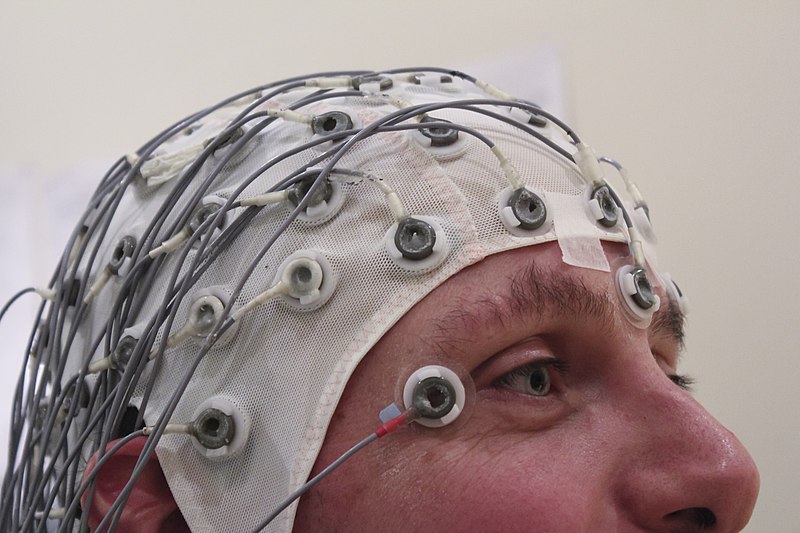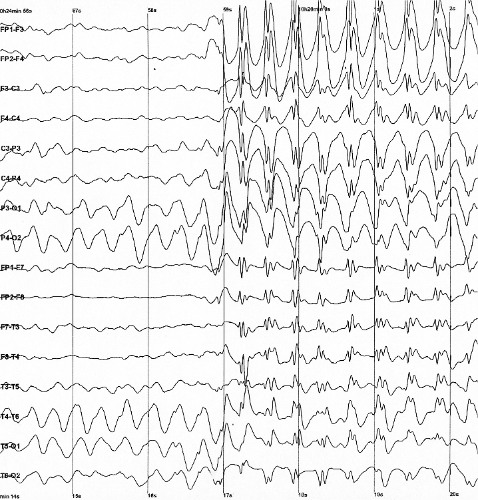Chapter 4: Research Methods in Biological Psychology
4.4: Tools of Cognitive Neuroscience – EEG and MEG
Advances in technology have led to ever more sophisticated brain recording techniques. Just as X-ray technology allows us to peer inside the body, neuroimaging techniques allow us to view the working brain (Raichle,1994). Many noninvasive techniques for studying human brain function are used in the field of biopsychology and each technique has advantages and disadvantages. It is important to recognize that each method allows us to “see’” brain activity through a different lens. As a result, it is important to understand how each technique works. It is fascinating to think about how our understanding of the brain is intimately related to the available technologies. As new technologies and techniques are developed, we will be able to develop an even deeper understanding of brain function (Biswas-Diener, 2023).
Electroencephalography (EEG) measures the electrical activity of the brain and has been used for a century (e.g., Berger, 1929). When large populations of neurons are active, they create a small electrical voltage that passes through the skull and scalp. Electrodes placed on the participant’s head pick up the voltages, which are amplified and recorded. Researchers can record the voltages from brain activity as the participant performs a task.
Because the small voltages are distorted as they pass through brain tissue, skin, and bone, researchers only have a rough idea where in the brain a signal was generated. This uncertainty is especially the case for signals coming from deep within the brain (even if the researchers have the person’s structural brain scan, high-density electrode coverage from a cap with 256 electrodes, and sophisticated localization analysis algorithms). Thus, EEG’s spatial resolution of where something occurs in the brain is rather low. Conversely, EEG’s temporal resolution is excellent and indicates when something happens in the brain to the millisecond. With the excellent temporal resolution, EEG is well suited for examining the brain’s response to a stimulus event, or the event-related potentials (ERP). In a typical ERP experiment, researchers might play a visual or auditory event like a word, then measure the corresponding voltage changes that unfold in the brain over the next few hundred milliseconds. The amplitude, timing, and topography (position) of the EEG signal capture the underlying neural/mental processes.
The high temporal resolution and continuous recording of EEG allows it to capture different frequency brain waves, such as theta waves (oscillating at 4-7 Hertz (Hz), i.e. cycles per second), alpha waves (at 8-13 Hz), and beta waves (at 14-30 Hz). Brain oscillations reflect the summed activity of millions of neurons. They capture attentional or conscious states and play a role in how specific information is encoded and how attention is modulated in the brain (da Silva, 2013). In addition to the research uses noted above, EEG is also particularly important in clinical diagnosis, specifically with respect to diagnosing epilepsy as well as seizure and sleep disorders.


Magnetoencephalography (MEG) is similar to EEG, but instead of electrical signals, MEG picks up the weak magnetic fields generated by the flow of electrical charge associated with neural activity. Because the magnetic fields generated by brain activity are so small, special rooms are needed that shield out magnetic fields in the environment so that the MEG sensors pick up magnetic fields from neural activity without environmental contamination. Similar to EEG, MEG also has excellent (millisecond) temporal resolution. The spatial resolution of MEG is far better than that of EEG because magnetic fields are able to pass relatively unchanged through hard and soft tissue and therefore are not distorted by skull and scalp. In spite of MEG’s excellent spatial and temporal resolution, it is used much less widely than EEG because the MEG apparatus is much more expensive and unwieldy than that for EEG.
Text Attributions
This section contains material adapted from:
Biswas-Diener, R. (2023). The brain and nervous system. In R. Biswas-Diener & E. Diener (Eds), Noba textbook series: Psychology. Access for free at http://noba.to/4hzf8xv6 License: CC BY-NC-SA 4.0 DEED
A neuroimaging technique that measures electrical brain activity via multiple electrodes on the scalp.
A term that refers to how small the elements of an image are; high spatial resolution means the device or technique can resolve very small elements; in neuroscience, it describes how small a structure in the brain can be imaged.
A term that refers to how small a unit of time can be measured; high temporal resolution means capable of resolving very small units of time; in neuroscience, it describes how precisely in time a process can be measured in the brain.
A brain science technique that measures brain activity by picking up the tiny magnetic fields generated by neural activity.
